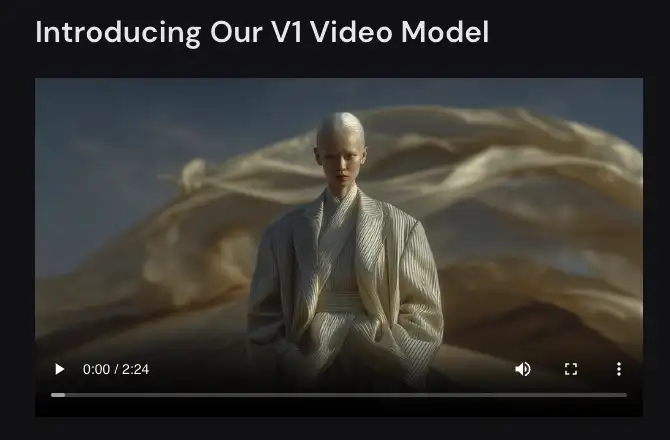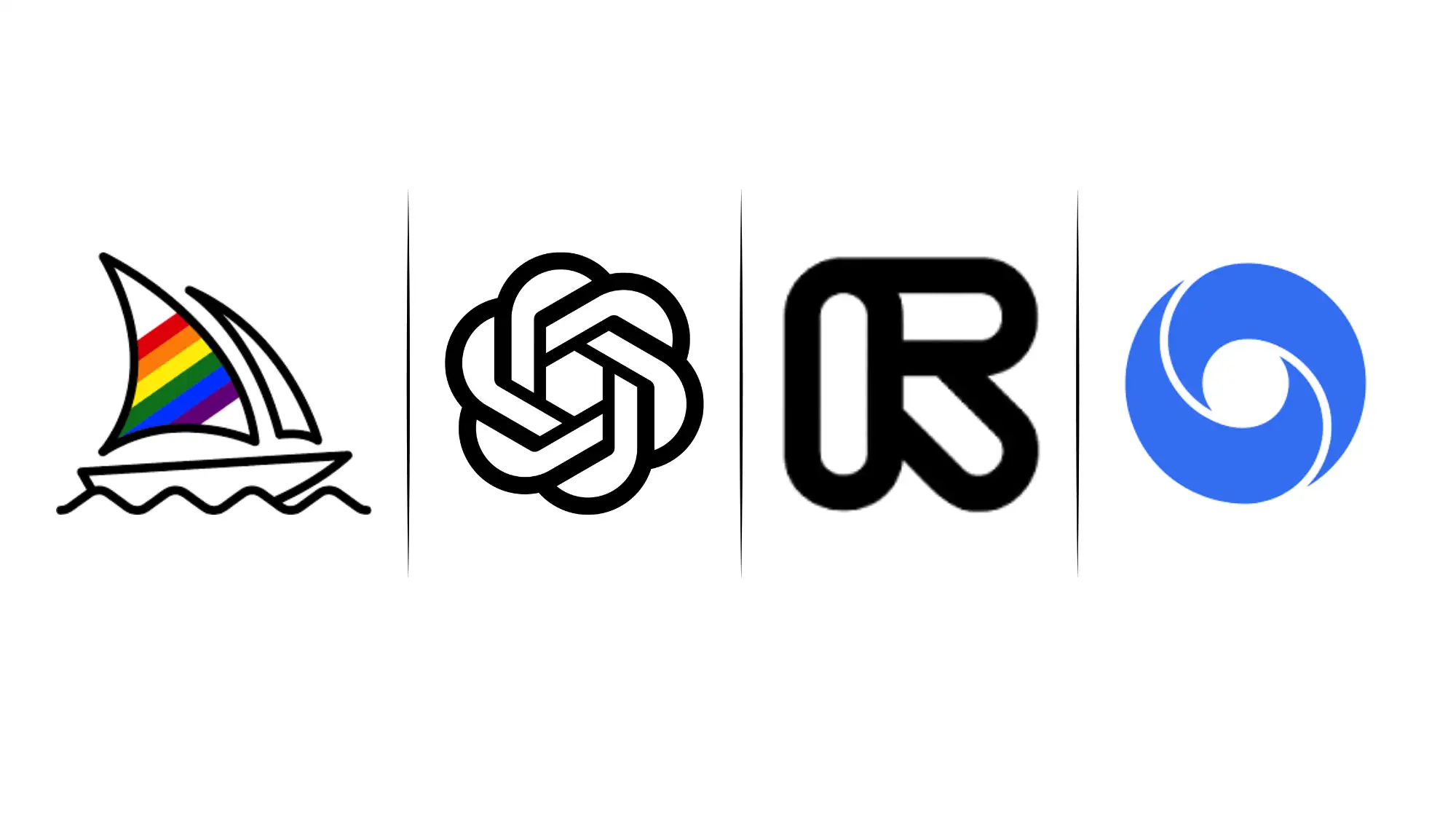Midjourney Enters the AI Video Race With V1 Model
.webp)
Eric Walker · 10, July 2025
Midjourney’s V1 Video Model turns its iconic, painterly images into affordable 5-second motion loops, giving everyday creators an instant doorway into AI animation—and thrusting the platform into a head-to-head sprint with OpenAI’s Sora, Google’s Veo, and Runway Gen-4 for the future of generative video.

The Age of Moving Pixels
When text-to-image exploded in 2022, it felt as if creation itself had acquired a turbo button. Three years on, video is taking that same leap. The big story in 2025 isn’t merely prettier stills or longer prompts—it’s a scramble to give those images believable motion, temporal consistency and, eventually, interactivity. Google DeepMind’s Veo 3 can already spit out eight-second 4K clips with native sound; OpenAI’s Sora turns prose into 20-second photorealistic vignettes; Runway’s Gen-4 promises continuity across shots. Into this high-stakes arena strides Midjourney, the poster-child of stylised imagery, with its first video product: the V1 Video Model.
Unlike its rivals, Midjourney doesn’t try to mimic a cinema camera. It plays to its strength—painterly aesthetics—and inserts motion as the new brush-stroke. That choice, and the low $10 entry price, could widen the funnel of would-be video creators faster than any photorealistic demo reel.
A Close Look at Midjourney V1
From Stills to Five-Second Motion Loops
Midjourney keeps its familiar “/imagine → grid of four” workflow. The new Animate button turns each still into four 5-second clips rendered at ~24 fps and 480 p resolution. Users can extend a chosen take in four-second increments—up to 21 seconds total—without leaving the browser.
Two Motion Modes, Two Prompting Styles
- Automatic: V1 invents a “motion prompt” behind the scenes; great for quick social posts.
- Manual: The user writes the motion cue (“camera trucks left while petals swirl”). Both modes expose a Low Motion and High Motion toggle. Low Motion tends to keep the camera parked, adding subtle subject movement—perfect for ambient loops. High Motion energises both subject and camera but occasionally induces “wonky” artefacts, a trade-off Midjourney acknowledges up front.
Pricing, Performance & Access
- Web-only launch. Discord integration will come later.
- Cost: One video job costs ~8× an image job, but because each job yields four clips, the per-second price works out to “one image worth of credits per second”—about 25× cheaper than most commercial AI video tools today. Web “Relax” mode for slower, lower-cost rendering is available to Pro and Mega subscribers.
- Subscriptions: All paid tiers—even the $10 Basic plan—unlock V1, though frequent animators will burn through fast minutes quickly.
What V1 Is Not (Yet)
- No text-to-video; you must start with an image.
- No HD or 4K output.
- No native audio or timeline-style editing.
Midjourney is candid that V1 is a “stepping stone” toward real-time, open-world simulations where image, video and 3-D models fuse.(updates.midjourney.com)
V1 vs Sora, Veo 3 & Runway Gen-4—Feature Face-Off
| Capability | Midjourney V1 | OpenAI Sora | Google Veo 3 | Runway Gen-4 |
| Core mode | Image-to-video | Text-to-video | Text-to-video (with native audio) | Text/Ref-image to video |
| Max clip length¹ | 21 s | 20 s (Pro) / 5 s (Plus) | 8 s | 12–15 s today |
| Resolution | 480 p | 1080 p (Pro) / 720 p (Plus) | 4 K | 1080 p |
| Audio | None | None | Yes | None (external add-on) |
| Entry price | $10/mo | $20/mo (Plus) | $19.99/mo (Pro tier) + AI Ultra for longer clips | Free trial then $15–35/mo |

Why Midjourney Still Matters in a 4K World
- Accessibility: The cheapest ticket to AI video among major players.
- Style over physics: Its painterly signature sidesteps uncanny-valley realism traps.
- Image-first workflow: Existing Midjourney users need zero ramp-up time.
Where Competitors Pull Ahead
- Sora’s physics engine excels at complex scene logic—explosions, depth, simulated gravity.
- Veo 3 adds synced ambient sound and dialogue, positioning itself for marketing assets and short commercials.
- Runway Gen-4 touts character consistency across multiple shots—critical for narrative work.
Free Midjourney available on GlobalGPT, an all-in-one AI platform.
Legal Clouds on the Horizon
The week Midjourney shipped V1, Disney and Universal filed a federal lawsuit alleging that the company trained—and now animates—copyrighted characters without permission. The complaint seeks an injunction and damages, calling Midjourney’s models “visual plagiarism machines.”
Why it matters:
- Injunction risk: A court-ordered pause could stall V1’s rollout or force stricter filters.
- Precedent-setting: Hollywood’s first coordinated strike on a generative-AI firm may shape fair-use doctrine for training data.
- Creator anxiety: Artists using V1 for fan edits could find themselves in murky legal waters if filters remain porous.
Toward Real-Time, Open-World Simulation
Midjourney’s blog frames V1 as the second brick in a four-layer pyramid: images → video → 3-D space → real-time interaction. The longer-term vision looks less like TikTok loops and more like procedurally generated game worlds or immersive brand experiences. Achieving that will require:
- Temporal coherence: Avoiding flicker across extended sequences.
- Volumetric understanding: True 3-D geometry, not camera-mapped 2-D sprites.
- Latency breakthroughs: Rendering fast enough for VR or AR headsets.
If Midjourney can democratise each layer the way it did still imagery, we may see “living concept art” become the storyboard norm and hobbyist machinima graduate to mainstream entertainment.(updates.midjourney.com)
What Creators and Brands Should Do Right Now
- Experiment while it’s cheap. For $10 you can validate whether stylised motion adds lift to social campaigns or indie albums.
- Plan for workflow hybrids. Marry V1’s stylised clips with Sora- or Veo-generated realism inside conventional editors.
- Stay copyright-savvy. Avoid trademarked characters and keep records of prompted assets; the legal landscape is shifting by the month.
- Think interactive. Start collecting assets (character sheets, model sheets) you could one day import into a Midjourney real-time scene.
Key Takeaways & Implications
V1 will not dethrone Sora’s photorealism or Veo 3’s cinematic polish this year. But it does something arguably more disruptive: it collapses the distance between a doodle and a moving picture for millions of everyday creators. In 2022, Midjourney put high-art illustration a prompt away. In 2025, it’s doing the same for animation—480 p today, whole universes tomorrow.
